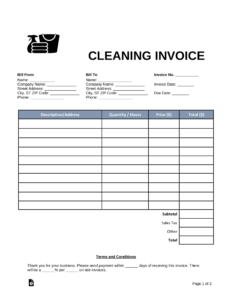Psychotherapy is a crucial aspect of mental health treatment, helping individuals overcome various psychological issues and improve their overall well-being. To ensure effective therapy sessions, psychotherapists rely on progress notes to document their observations, track treatment progress, and collaborate with other healthcare professionals. In this article, we will delve into the world of psychotherapy progress note templates in PDF format, exploring their benefits, components, and how they can enhance the therapeutic process. Whether you are a mental health professional or someone interested in understanding the importance of progress notes, this guide will provide valuable insights.
The Role of Progress Notes in Psychotherapy
Progress notes serve as a vital tool in psychotherapy, enabling mental health professionals to maintain a comprehensive record of their patients’ progress during therapy sessions. These notes capture essential information about the client’s presenting issues, treatment goals, interventions, and outcomes. By documenting these details, progress notes provide several benefits:
- Continuity of care: Progress notes help ensure continuity of care by allowing different therapists or healthcare professionals to review previous sessions and understand the client’s history.
- Evidence-based practice: Accurate and detailed progress notes facilitate evidence-based practice, enabling therapists to analyze the effectiveness of different interventions and make informed decisions about treatment plans.
- Legal and ethical requirements: Progress notes fulfill legal and ethical requirements by providing a record of the therapist’s actions, ensuring accountability, and protecting both the client and the therapist in case of legal or ethical concerns.
- Therapist collaboration: Progress notes enable therapists to collaborate with other healthcare professionals involved in the client’s care, such as psychiatrists, physicians, or social workers. These notes serve as a mode of communication, ensuring a coordinated and holistic approach to treatment.
The Importance of a Psychotherapy Progress Note Template
While progress notes are crucial, maintaining consistency and structure in their format is equally important. Using a psychotherapy progress note template provides numerous advantages:
- Efficiency: Templates save time by providing a pre-defined structure for progress notes, allowing therapists to focus on the content rather than formatting.
- Organization: Templates ensure that all necessary components of a progress note are included, promoting thorough documentation and preventing important information from being overlooked.
- Standardization: A standardized template ensures uniformity in progress notes across different therapists and healthcare settings, facilitating seamless collaboration and information exchange.
- Legal compliance: Templates can help therapists comply with legal and ethical requirements by including essential elements such as informed consent, confidentiality statements, and mandated reporting guidelines.
- Consistency: Using a consistent template throughout a client’s therapy journey helps therapists easily track and compare progress over time, enhancing treatment planning and evaluation.
The Components of a Psychotherapy Progress Note Template
A well-designed psychotherapy progress note template includes several key components. Let’s explore each of these components in detail:
1. Client Information
The progress note should begin with basic client information, including their name, date of birth, contact details, and relevant identification numbers. This section provides a quick reference for identifying the client and ensures accurate record-keeping.
2. Session Details
Next, the progress note should include details about the therapy session, such as the date, time, duration, and location. These details help therapists keep track of the frequency and duration of sessions, ensuring optimal treatment planning.
3. Chief Complaint and Presenting Issues
Therapists should document the client’s chief complaint, which refers to the primary reason for seeking therapy. Additionally, therapists should capture the client’s presenting issues, including any symptoms, concerns, or challenges they are experiencing. This section provides valuable context for understanding the client’s needs and tailoring the treatment accordingly.
4. Treatment Goals
Progress notes should outline the treatment goals discussed and agreed upon with the client. These goals should be specific, measurable, achievable, relevant, and time-bound (SMART). Therapists should document both short-term and long-term goals, ensuring that they align with the client’s aspirations and therapy objectives.
5. Interventions
This section highlights the therapeutic interventions employed during the session. Therapists should describe the techniques, strategies, or activities used to address the client’s concerns and promote progress. Including specific details about the interventions helps therapists evaluate their effectiveness and make informed decisions about future treatment plans.
6. Progress and Outcomes
Therapists should document the client’s progress and outcomes observed during the session. This includes any positive changes, insights gained, or challenges faced by the client. Tracking progress helps therapists monitor the effectiveness of the therapy and make necessary adjustments to ensure optimal outcomes.
7. Collaboration and Referrals
If the therapist collaborated with other healthcare professionals or referred the client to additional services, this information should be documented. Collaboration and referrals play a crucial role in providing holistic care, and progress notes serve as a means of communication between professionals involved in the client’s treatment.
8. Plan for Next Session
Progress notes should include a plan for the next therapy session. This can include follow-up activities, homework assignments, or topics to be addressed in the next meeting. Documenting the plan ensures continuity and provides a roadmap for future sessions.
9. Informed Consent and Confidentiality
Progress notes must include a section on informed consent and confidentiality. This section outlines the client’s agreement to participate in therapy and clarifies the therapist’s obligation to maintain confidentiality, except in cases where mandated reporting is required.
10. Therapist Signature and Credentials
The progress note should end with the therapist’s signature and professional credentials. This verifies the authenticity of the note and provides a clear indication of the therapist responsible for the client’s care.
Benefits of Using a Psychotherapy Progress Note Template in PDF Format
Now that we have explored the components of a progress note template, let’s discuss the benefits of using a PDF format:
1. Compatibility and Accessibility
PDF files can be easily accessed and viewed on various devices and operating systems, ensuring compatibility across different platforms. This allows therapists to access progress notes from their computers, tablets, or smartphones, enhancing convenience and flexibility.
2. Security and Privacy
PDF files offer robust security features, including password protection and encryption, ensuring the confidentiality of sensitive client information. Therapists can securely store and share progress notes without compromising privacy.
3. Easy Sharing and Collaboration
PDF files can be effortlessly shared via email, file-sharing platforms, or electronic health record (EHR) systems. This simplifies collaboration between therapists and other healthcare professionals, promoting effective communication and coordinated care.
4. Preservation of Formatting
PDF files preserve the formatting and layout of the progress note template, ensuring that the document appears as intended, regardless of the device or software used to view it. This eliminates the risk of distorted or misaligned content.
5. Print-Friendly
PDF files are print-friendly, allowing therapists to generate hard copies of progress notes whenever necessary. This can be useful for creating physical records or when sharing information with clients who prefer paper documents.
Case Study: The Impact of Progress Notes on Therapy Outcomes
To highlight the significance of progress notes in improving therapy outcomes, let’s explore a case study:
John, a 35-year-old individual with anxiety and depression symptoms, sought therapy to address his mental health concerns. His therapist, Sarah, diligently maintained progress notes throughout their therapy journey, documenting the session details, treatment goals, interventions, and progress.
By consistently reviewing progress notes, Sarah identified patterns in John’s symptoms and triggers, enabling her to tailor the therapy interventions to his specific needs. The progress notes also helped Sarah track John’s progress over time, noting the gradual reduction in anxiety symptoms and improvement in his overall well-being.
During therapy sessions, Sarah collaborated with a psychiatrist to adjust John’s medication dosage based on the progress and observations documented in the progress notes. The progress notes served as a reliable source of information for the psychiatrist, ensuring a coordinated approach to John’s treatment.
After several months of therapy, John’s progress notes reflected his increased self-awareness, improved coping skills, and enhanced emotional resilience. The progress notes provided a clear picture of John’s journey and the positive impact of therapy on his mental health.
Frequently Asked Questions (FAQs)
1. Are progress notes required in psychotherapy?
Yes, progress notes are an essential part of psychotherapy. They help therapists document treatment progress, ensure continuity of care, and comply with legal and ethical requirements.
2. Can progress notes be shared with clients?
Therapists must use their professional judgment when deciding whether to share progress notes with clients. In some cases, sharing progress notes can empower clients and enhance the therapeutic relationship. However, confidentiality and privacy concerns should always be considered.
3. How often should progress notes be written?
The frequency of writing progress notes can vary depending on the therapist’s preferences and the client’s needs. In general, it is recommended to write progress notes after each therapy session to ensure accurate and up-to-date documentation. This allows therapists to capture important details while they are fresh in their memory.However, there may be situations where therapists choose to write progress notes less frequently, such as in longer-term therapy where sessions are less frequent. In such cases, therapists should still ensure that progress notes are written regularly enough to maintain an accurate record of the client’s progress.
4. What should therapists do if they make an error in a progress note?
If therapists make an error in a progress note, it is important to correct the mistake promptly and transparently. One approach is to draw a single line through the error, write “error,” and initial it. This indicates that the information is incorrect and provides a clear indication of the correction. It is important not to erase or obliterate the original information, as this can raise concerns about tampering with the document.
5. How should progress notes be stored and retained?
Progress notes should be stored securely to protect client confidentiality and meet legal and ethical requirements. Electronic storage systems, such as secure electronic health record (EHR) platforms, can provide a safe and accessible method for storing progress notes. Physical copies of progress notes should be stored in locked filing cabinets or secure storage areas.
In terms of retention, it is generally recommended to retain progress notes for a specified period, such as 7-10 years, depending on legal and regulatory requirements. Therapists should consult local laws and professional guidelines to determine the appropriate retention period for progress notes.
Conclusion
Psychotherapy progress notes are a valuable tool for mental health professionals, enabling them to document treatment progress, collaborate with other healthcare professionals, and ensure continuity of care. By using a psychotherapy progress note template in PDF format, therapists can streamline their documentation process, enhance organization, and comply with legal and ethical requirements. The components of a progress note template, such as client information, session details, treatment goals, interventions, and progress, provide a comprehensive and standardized structure for effective note-taking.
Progress notes play a crucial role in evidence-based practice, allowing therapists to track outcomes, evaluate interventions, and make informed decisions about treatment plans. By implementing progress notes and utilizing a standardized template, therapists can enhance the therapeutic process, improve client outcomes, and foster collaboration among healthcare professionals.
FAQs
1. Are progress notes required in psychotherapy?
Yes, progress notes are an essential part of psychotherapy. They help therapists document treatment progress, ensure continuity of care, and comply with legal and ethical requirements.
2. Can progress notes be shared with clients?
Therapists must use their professional judgment when deciding whether to share progress notes with clients. In some cases, sharing progress notes can empower clients and enhance the therapeutic relationship. However, confidentiality and privacy concerns should always be considered.
3. How often should progress notes be written?
The frequency of writing progress notes can vary depending on the therapist’s preferences and the client’s needs. In general, it is recommended to write progress notes after each therapy session to ensure accurate and up-to-date documentation. However, therapists may choose to write progress notes less frequently in longer-term therapy where sessions are less frequent.
4. What should therapists do if they make an error in a progress note?
If therapists make an error in a progress note, it is important to correct the mistake promptly and transparently. One approach is to draw a single line through the error, write “error,” and initial it. It is important not to erase or obliterate the original information.
5. How should progress notes be stored and retained?
Progress notes should be stored securely to protect client confidentiality and meet legal and ethical requirements. Electronic storage systems, such as secure electronic health record (EHR) platforms, can provide a safe and accessible method for storing progress notes. Physical copies of progress notes should be stored in locked filing cabinets or secure storage areas. Retention periods for progress notes can vary, and therapists should consult local laws and professional guidelines for guidance on how long to retain progress notes.
In conclusion, psychotherapy progress note templates in PDF format offer numerous advantages, including efficiency, organization, standardization, legal compliance, and consistency. By utilizing a well-designed template and incorporating all necessary components, therapists can enhance their documentation process, improve collaboration, and provide high-quality care to their clients. Progress notes, when used effectively, contribute significantly to evidence-based practice, client outcomes, and the overall success of psychotherapy.





